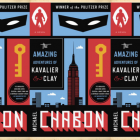Seeing Red: What Writers Should Know About Color
 Writers should understand how to use color because seeing “red”and reading the word “red” can evoke the same heightened emotion.
Writers should understand how to use color because seeing “red”and reading the word “red” can evoke the same heightened emotion.
Our perception, behavior and mood can be influenced by color. Reaction to color is part of our evolutionary biology. The color blue, for example, is associated with the nighttime and rest, so it calms us. Yellow, the color associated with the sun, does just the opposite.
The way we perceive space can be altered by color. Warm colors — yellows, reds and oranges — tend to advance and make a room seem smaller. Cool colors — the purple, blues and greens —retreat in space and make a room feel larger.
Semantic meaning is embedded in color. Light green on a label indicates “cooling mint.” And the color of something can change our behavior towards it. We might be less likely to buy mint gum packaged in red.
Color has gender. Green and blue are considered masculine; yellow, red, purple, and pink, feminine. You can use color deliberately to evoke gender stereotypes, or you can play around with them and make a killer’s favorite color pink.
Attitudes, convictions and judgments can be painted with color. Black can be evil or elegant. White can portray goodness or emptiness. Primary colors can indicate playfulness or stupidity, depending on how you use them. Your overall color palette can reveal a lot. You wouldn’t use the same combination of color to describe the inner city as you would the suburbs.
A powerful tool, color works on a deep, subconscious level and we are often unaware when and how it affects us. Filmmakers and consumer marketers manipulate us with color all the time. Painters never stop seeing or thinking about color. Not that long ago, I spent a whole evening with a friend discussing a patch of green he’d added to the upper right hand corner of his canvas. Did the green recede too much? Was its translucency distracting? Should it be more opaque? How did the green affect the colors around it?
Writers should work with color in the same manner. The next time your character walks down the street with a purse, step back and ask yourself, what color is it? Be deliberate about your choice. Color without purpose is just fill. If it’s red, what kind of red is it and what does it mean? Red can represent love, passion, embarrassment or anger. And you must always consider the colors around it. What color is the coat on which the purse rests? Because putting one color up against another changes both. And where is the sun? Light changes color in surprising ways—you can see a wider spectrum on an overcast day. The high, bright light on a sunny day tends to wash color out. If your scene takes place at night, there has to be a moon or a streetlight because we can’t see color without light. And what is the purse made of? Canvas or patented leather? The choice of material will give it a different sheen and this in turn will alter the impact of the color. Hue, value, tint, shade, tone, brightness, saturation, lightness, opacity—color is infinitely complex and the slightest variation can change what it does and what it means.
Color communicates emotion and meaning. There is as much to know about the language of color as there is to know about the language of words. One color intentionally handled can determine the direction of a whole scene.



